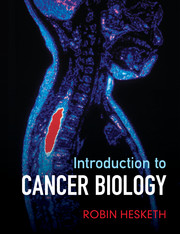Book contents
- Frontmatter
- Contents
- Acknowledgements
- Foreword
- Introduction
- 1 Lessons from epidemiology
- 2 Causes of cancer
- 3 Signalling in normal cells
- 4 ‘Cancer genes’: mutations and cancer development
- 5 What is a tumour?
- 6 Cancer signalling networks
- 7 The future of cancer prevention, diagnosis and treatment
- 8 The future of cancer in the post-genomic era
- Appendix A Tumour grading and staging
- Appendix B Targets of specific anti-cancer drugs
- Appendix C Classes of major oncoproteins
- Appendix D Major tumour suppressor genes
- Appendix E Ten major cancers at a glance
- Glossary and abbreviations
- Bibliography
- Index
- Plate Section
3 - Signalling in normal cells
Published online by Cambridge University Press: 05 February 2013
- Frontmatter
- Contents
- Acknowledgements
- Foreword
- Introduction
- 1 Lessons from epidemiology
- 2 Causes of cancer
- 3 Signalling in normal cells
- 4 ‘Cancer genes’: mutations and cancer development
- 5 What is a tumour?
- 6 Cancer signalling networks
- 7 The future of cancer prevention, diagnosis and treatment
- 8 The future of cancer in the post-genomic era
- Appendix A Tumour grading and staging
- Appendix B Targets of specific anti-cancer drugs
- Appendix C Classes of major oncoproteins
- Appendix D Major tumour suppressor genes
- Appendix E Ten major cancers at a glance
- Glossary and abbreviations
- Bibliography
- Index
- Plate Section
Summary
A universal feature of the membranes that form the boundary of all cells is their capacity to permit the transfer of both chemical entities and information. Critical to the latter are trans-membrane receptors, of which the receptor tyrosine kinase family form a particularly important category in the context of regulating growth and proliferation. Through being able to respond to ligand binding by stimulating multiple pathways of intracellular proteins, activated receptors signal to the nucleus to regulate gene expression. Components of these pathways, including the receptors themselves, are frequently mutated in cancers, giving rise to aberrant proliferation control. To illustrate the principles of signalling we will consider one major example: the RAS-MAPK pathway activated by epidermal growth factor (EGF) through its receptor (EGFR), a member of the receptor tyrosine kinase family. The critical result of such signalling is the activation of transcription of key genes required for cells to enter the division cycle, a master regulator being MYC. Steroid hormones that diffuse across membranes before binding to their receptors also play significant roles in cancer and modulation of their effects has been an important therapeutic strategy.
Introduction
A fundamental property of all cells is their capacity to respond to external signals. Mammalian cells receive a vast number of such signals in the form of chemical messengers, many of which are hormones – often called growth factors or mitogens (or cytokines if they’ve been secreted by cells of the immune system). The intracellular pathways that are activated are complex and their upshot is a pattern of gene expression that determines the critical decisions that cells have to take – whether to proliferate or remain quiescent, to change their function (differentiate) or even to commit suicide. However, only four basic mechanisms are used to transduce these signals. Three of these utilise proteins that span the plasma membrane (Fig. 3.1). These cell surface receptor proteins comprise: enzyme-coupled receptors, G-protein-coupled receptors (GPCRs) and ligand-gated ion channel receptors. The fourth system uses receptors within the cell to respond to steroid hormones.
- Type
- Chapter
- Information
- Introduction to Cancer Biology , pp. 44 - 66Publisher: Cambridge University PressPrint publication year: 2012



